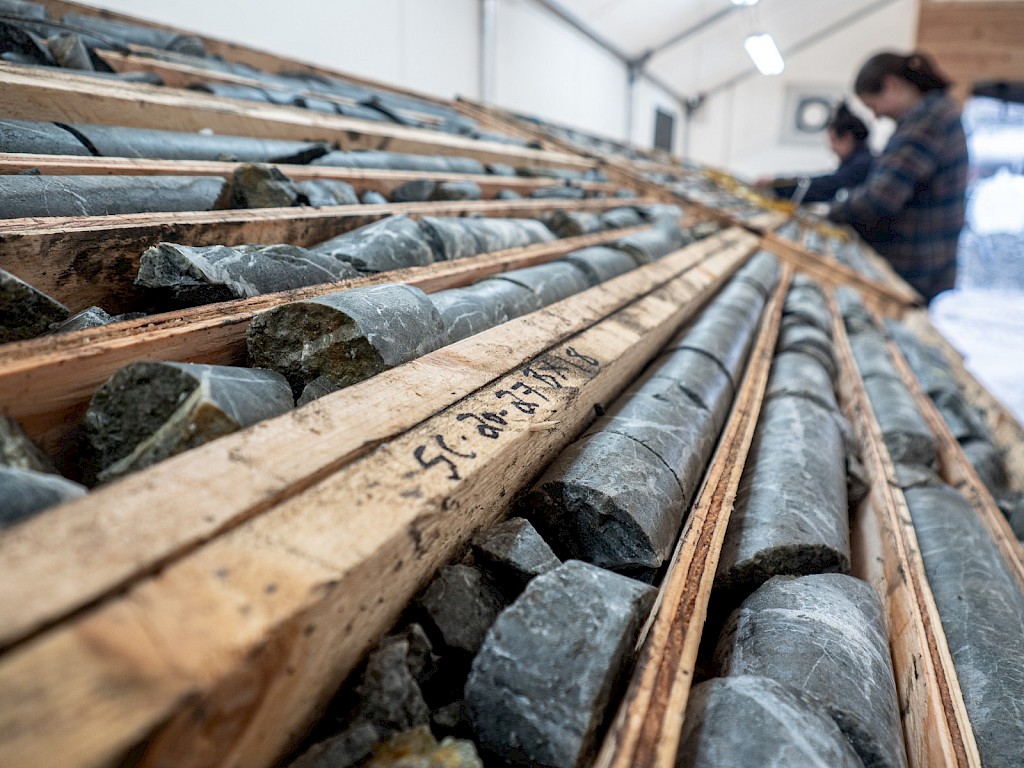Scottie Resources drills 5.8 metres of 6.98 g/t gold at Scottie gold mine, British Columbia

Scottie Resources Corp. [TSXV-SCOT, OTCQB-SCTSF] reported new assays on its Scottie Gold Mine deposit including intercepts at the P-Zone of 6.89 g/t gold over 5.8 metres and 7.11 g/t gold over 2.2 metres.
The results signify considerable upside on a near mine expansionary target. The Scottie Gold Mine is a 100%-owned and royalty free, past-producing high-grade deposit located 35 km north of the town of Stewart, British Columbia, along the Granduc Road.
Highlights: New surface discovery of 20.5 and 17.9 g/t gold in outcrops between the Scottie Gold Mine and the D-Zone.
Scottie Gold Mine P-Zone intercepts of 6.89 g/t gold over 5.8 metres and 7.11 g/t gold over 2.20 metres.
Both intercepts correlate well with one another and represent extensions of the zone to depth and to the west of previous drilling.
Holes in the Stockwork area targeted porphyry-style mineralization and intercepted wide zones bearing anomalous gold. Mineralization is primarily hosted in andesitic rocks of the Unuk River unit of the Hazelton Formation, a favourable host rock in the region.
From surface, SR23-294 intersected 0.36 g/t gold over 94.51 metres, including 1.40 g/t gold over 4.94 metres. From surface, SR23-295 intersected 0.19 g/t gold over 269.53 metres, including 1.47 g/t gold over 4.65 metres.
Brad Rourke, president and CEO, commented: “Continued exploration on the historic Scottie Gold Mine has always been part of our strategy to advance the company, and these results exemplify the upside on testing new theories around the high-grade past-producer. These intercepts clearly illustrate the potential of the P-Zone to be a major mineralized structure at the Scottie Gold Mine and highlight the advantage of pursuing near mine exploration on this project given its underexplored history. Results from Stockwork area continue to provide support for the existence of a large low grade bulk tonnage target in the area and will help us determine vectors to better target higher grade zones.””
Mineralization at the P-Zone was first confirmed through drilling by Scottie Resources in 2019. The Scottie Gold Mine historically had several zones that were characterized through mining and drilling. These steeply-dipping, NW-trending, parallel to sub parallel vein groups are described as the L-, N-, M-, and O-Zones (from south to north). Past production from the mine was primarily from the M-Zone, with small amounts from the O-Zone. The P-Zone is located to the north of the O-Zone and was historically identified at surface from outcrop sampling, but never drill tested prior to Scottie Resources initial drill campaign in 2019. P-Zone intercepts from 2020 and 2021 include 10.7 g/t gold over 2.77 metres, 6 g/t gold over 2 metres, and 3.35 g/t gold over 2.9 metres.
Surficial mapping and sampling on the Scottie Gold Mine Project identified a new target located between the Scottie Gold Mine and the C & D-Zones. This outcropping exposure of the vein style mineralization includes both sulphide-rich and quartz-carbonate veins, as well as a narrow zone of shearing.
Selected high-grade grab sample results from new vein zone discovery on the Scottie Gold Mine Project included 20.5 g/t gold and 262 g/t silver; 17.9 g/t gold and 762 g/t silver; as well as 3.98 g/t gold and 175 g/t silver.
Exploration of the Scottie Gold Mine Project over the past 5 years has produced exceptional drill results through the discovery of high-grade gold in four new zones (Blueberry Contact Zone, Domino, D-Zone, P-Zone) and the expansion of previously drill confirmed targets (Scottie Gold Mine, C-Zone, Bend Vein, Stockwork). When depicted on a map of property scale geology there is a clear spatial relation between the outcropping and drill-confirmed high-grade gold targets and the contact with the Jurassic aged, Texas Creek Plutonic suite intrusion. The new 2023 surface discovery of gold-rich vein style mineralization between the Scottie Gold Mine and the C & D-Zones further supports this relationship and provides an obvious drill target for 2024.
Future exploration will continue to expand the known zones while also targeting new discoveries between them, with the goal of establishing physical connections at depth between the numerous outcropping high-grade zones which are believed to all be part of the same mineralizing event.
The Scottie Gold Mine, which operated between 1981 to 1985, produced 95,426 gold ounces from 183,147 tonnes at an average recovered grade of 16.2 g/t gold. The mine ultimately shut down due to a drop in gold price combined with high-interest rates.
The Stockwork Zone is situated approximately 1.3 km northeast of the Blueberry Contact Zone. Originally, the area was a target for the easterly extension of the high-grade Bend vein which historic mapping, geophysics, soil sampling, and limited drilling was focused. The discovery of the Blueberry Contact Zone caused renewed interest in the area, due to the projected offset of the contact due to the north bounding, E-W striking ‘Mill’ fault.
Drilling in the Stockwork Zone during 2021 and 2022 produced consistent long intervals of anomalous gold over the entire hole lengths, e.g., 0.35 g/t gold over 245 metres in SR22-203, which prior to 2023 represented the longest hole drilled in the area. Hole SR22-203 also included the first high-grade intercept reported in the area, grading 5.28 g/t gold over 4.50 metres.
Scottie owns a 100% interest in the Scottie Gold Mine Property which includes the Blueberry Contact Zone and the high-grade, past-producing Scottie Gold Mine. Scottie also owns 100% interest in the Georgia Project which contains the high-grade past-producing Georgia River Mine, as well as the Cambria Project properties and the Sulu and Tide North properties. Altogether Scottie Resources holds approximately 58,500 hectares of mineral claims in the Stewart Mining Camp in the Golden Triangle.
